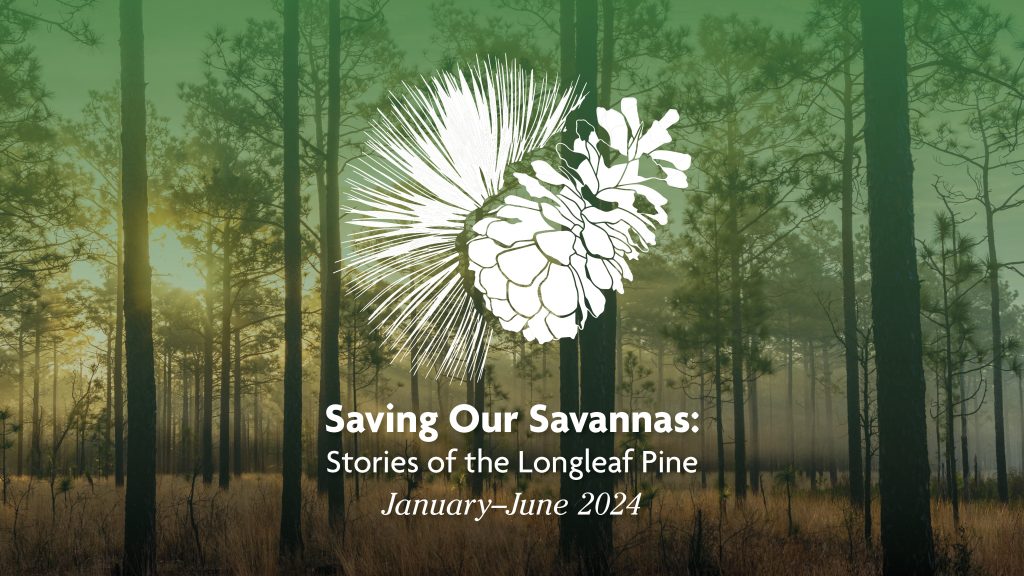Join the North Carolina Botanical Garden and partners for Saving Our Savannas: Stories of the Longleaf Pine, a 6-month series of programs and events that honor the natural, cultural, and historical significance of longleaf pine communities.
The series begins in January with a kickoff lecture by Dr. William Owen, longleaf landowner and vice-chair of The Longleaf Alliance Board of Directors. Each month focuses on a different theme related to longleaf pine communities:
- January: Introduction to Longleaf Pine Communities
- February: Longleaf Pine Natural Areas and Their Amazing Adaptations to Fire
- March: Cultural Significance of Longleaf Pine Communities
- April: The Longleaf Legacy: How a Vanishing Forest Shaped the History and Culture of the Southeast
- May: Taking Action for Longleaf Pine Communities
- June: Leaving a Legacy for the Future
The North Carolina Botanical Garden will host a number of programs on-site in Chapel Hill. Many of these programs will be available in a hybrid format with a Zoom option. Other excursions and workshops will take place in longleaf pine communities in eastern North Carolina. Beginning in June 2024, towns, organizations, and other groups will be able to borrow the Saving Our Savannas traveling exhibit.
Why the longleaf pine?
The longleaf pine (Pinus palustris) is a keystone species that once covered 90 million acres across the southeastern Coastal Plain from Virginia to Texas. The different biological communities it supports, from sandhill scrubs to wet pine flatwoods, have some of the highest rates of biodiversity per square meter in North America. They’re home to rare and endangered species like the red-cockaded woodpecker, gopher frog, and Venus flytrap.
Humans have had relationships with longleaf pines for thousands of years, starting with the Indigenous People who have built with, gathered from, and burned the habitat of longleaf pines for millennia. In the 18th and 19th centuries, enslaved African Americans were forced to tend tar kilns and work the turpentine orchards of longleaf pines. The naval stores they produced made North Carolina the world’s leading exporter of tar, pitch, and turpentine for 150 years. Following the Civil War, turpentine camps and the lumber industry moved southward, where these industries continued to exploit marginalized groups for labor.
Turpentining and clear-cutting for lumber destroyed most of the once-great longleaf pine forest. Today, less than five percent of its former acreage remains. But conservation groups across the Southeast are working to protect and restore this critical species and the communities it lives in. The longleaf pine isn’t just a legacy of the past: it’s a tree of the future.
Program Partners
We thank The Longleaf Alliance, Lumbee Tribe of NC: Agriculture and Natural Resources Department, The Nature Conservancy in North Carolina, North Carolina Museum of History, North Carolina Museum of Natural Sciences, Southern Conservation Partners, Triangle Native American Society, and UNC American Indian Center for partnering with the Garden on this series.
Learn more about Saving Our Savannas and how you can attend programs and support this collaborative effort on the Saving Our Savannas webpage.
